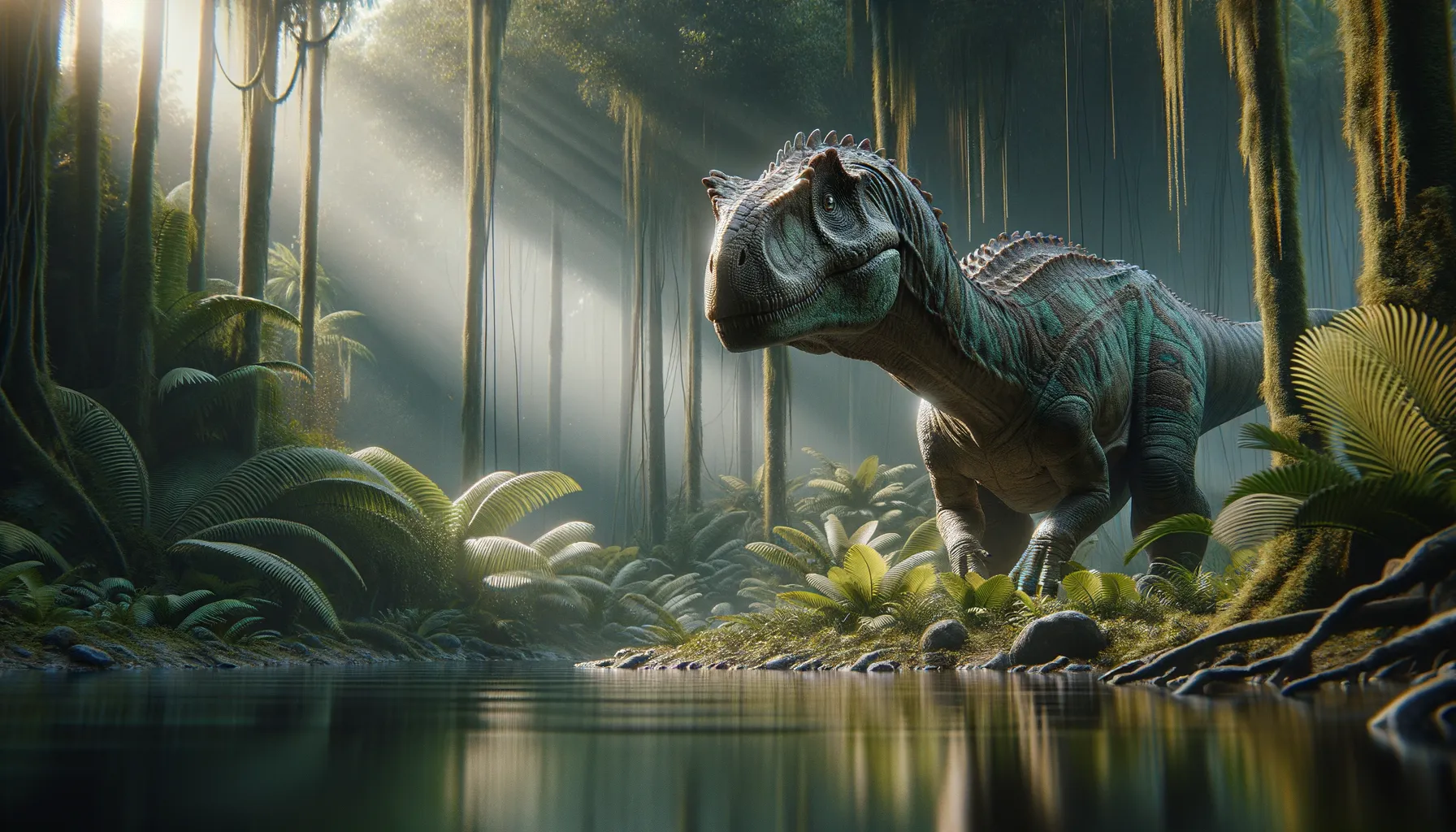
Struthiosaurus
Armored guardian of ancient woodlands!
Period
Cretaceous
Length
About 6 feet in length.
Height
Around 4 feet tall.
Weight
Approximately 1 ton.
Struthiosaurus was a small, armored dinosaur that roamed Europe during the Late Cretaceous period. Known for its bony armor and plant-eating habits, it was relatively slow-moving and relied heavily on its natural defenses to avoid predators. While not as large or fast as some of its contemporaries, its compact size and strong defensive features made it well-suited to the dense, forested environments of its time.
Diet
Struthiosaurus was herbivorous, primarily feeding on low-growing plants. Its diet likely consisted of a variety of ferns and cycads, which were abundant during its time.
Hunting
Being a herbivore, Struthiosaurus didn't hunt. It survived on plants and used its armor for protection rather than hunting.
Environmental challenges
Living in a dense and forested environment, its biggest challenge was maneuvering among thick vegetation and evading predators. The climate of the Late Cretaceous also posed challenges with fluctuations in temperature and food availability. Adaptations in diet helped it cope with these environmental shifts.
Speed
Relatively slow-moving.
Lifespan
Estimated to be several decades.
First discovery
First discovered in Austria in the 19th century.
Fun Facts
- Struthiosaurus was a small armored dinosaur from the late Cretaceous period.
- It is believed to have lived in what is now Europe, particularly Austria and possibly Romania.
- Struthiosaurus belonged to the group of dinosaurs called nodosaurids, known for their bony armor and lack of tail clubs.
- Unlike many other dinosaurs, Struthiosaurus might have been a relatively slow walker due to its short limbs.
- The name 'Struthiosaurus' means 'ostrich lizard,' highlighting its unique body shape compared to other dinosaurs.
- Scientists think Struthiosaurus might have been herbivorous, feeding on low-lying vegetation.
- Its remains were first discovered in 1871, making it one of the earliest dinosaurs to be studied from Europe.
Growth and Development
Struthiosaurus experienced steady growth from a young age, which was typical for ankylosaurid dinosaurs. It likely reached maturity within a few decades. The development of its bony armor was crucial for its survival, growing thicker and more robust as it aged.
Habitat
Struthiosaurus inhabited dense, forested regions across what is now Europe. These regions provided ample vegetation for grazing and natural camouflage against predators. The varied terrain also offered a multitude of hiding spots, aiding in its survival.
Interaction with other species
Struthiosaurus coexisted with other herbivorous and carnivorous dinosaurs in its environment. Its defensive features minimized direct conflict with predators. While interactions with other herbivores were likely non-aggressive, competition for food was inevitable in resource-scarce periods.
Natural lifespan
Struthiosaurus is believed to have lived for several decades naturally.
Reproduction
Struthiosaurus likely laid eggs in nests, similar to other ankylosaurs. Its reproductive behaviors remain elusive, but fossil evidence suggests it practiced some level of parental care. This care would have increased the survival odds of its offspring in a predatory environment.
Social behaviour
Struthiosaurus may have been solitary or lived in small groups, given its need for extensive vegetation and space. Interaction with others was probably minimal outside of mating seasons. The presence of young fossils suggests occasional group living, particularly for protection.
Fossil locations
Fossils of Struthiosaurus have primarily been found in Austria. Limited discoveries have also occurred in other parts of Europe, such as Romania and France. These finds provide critical insight into its distribution and habitat preferences during the Late Cretaceous.
